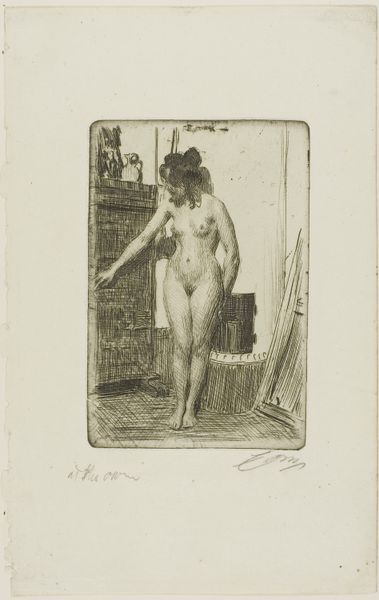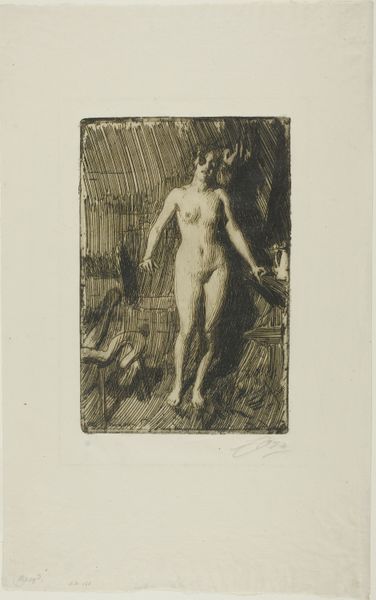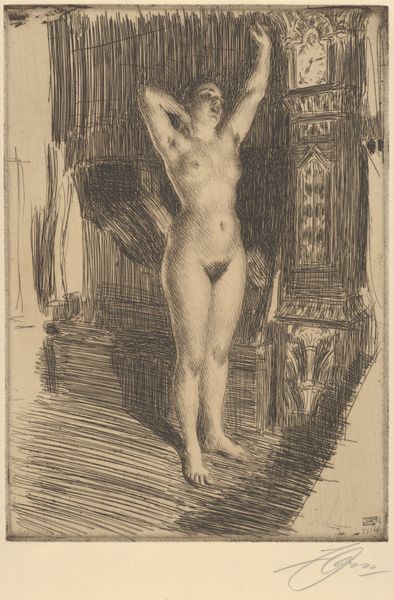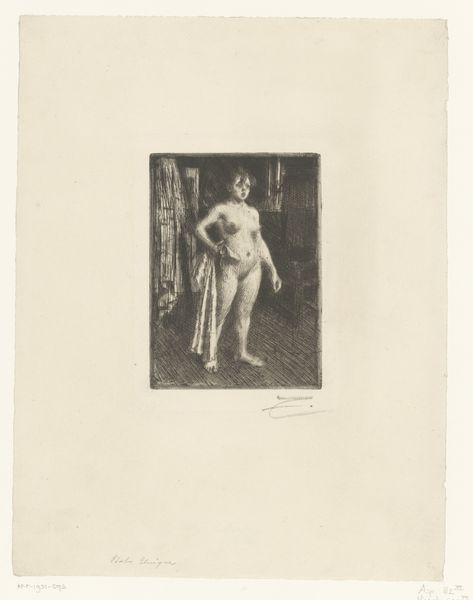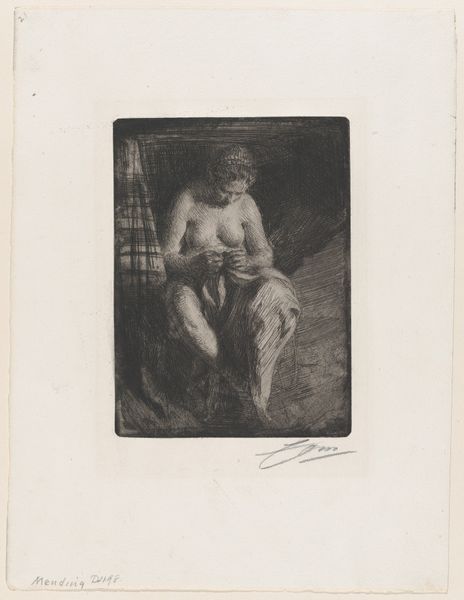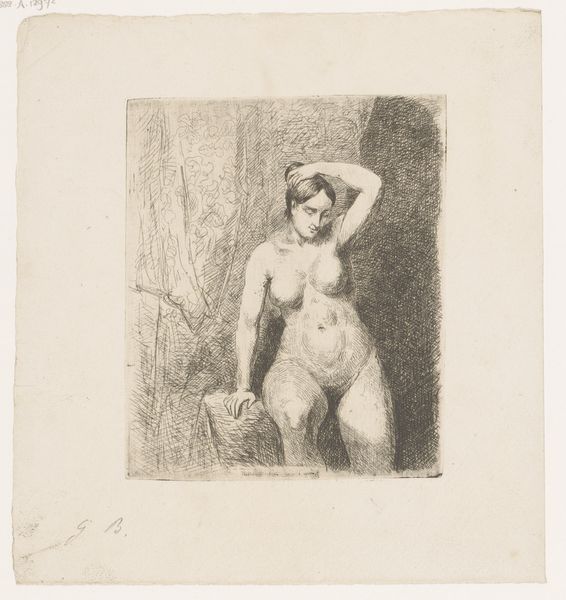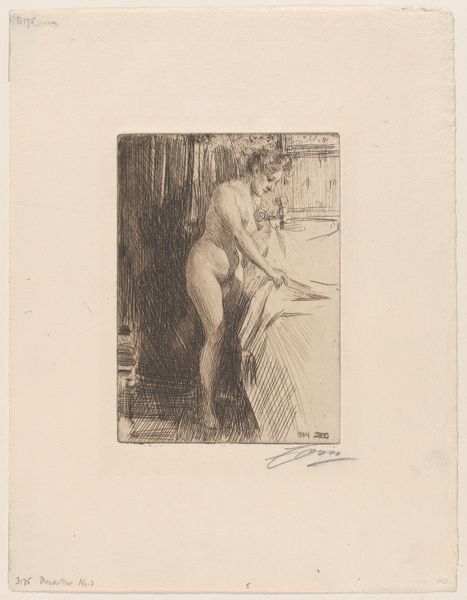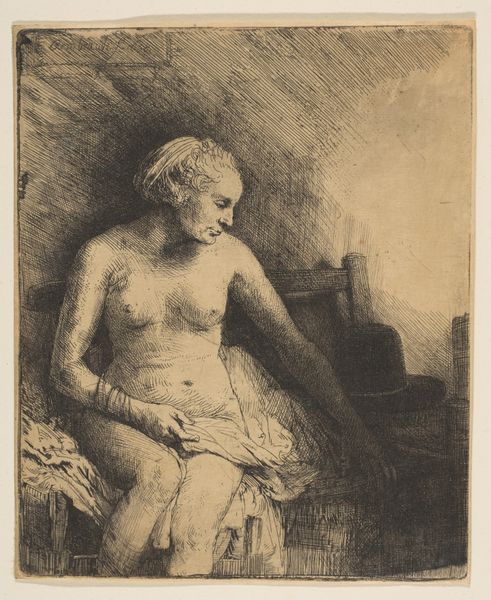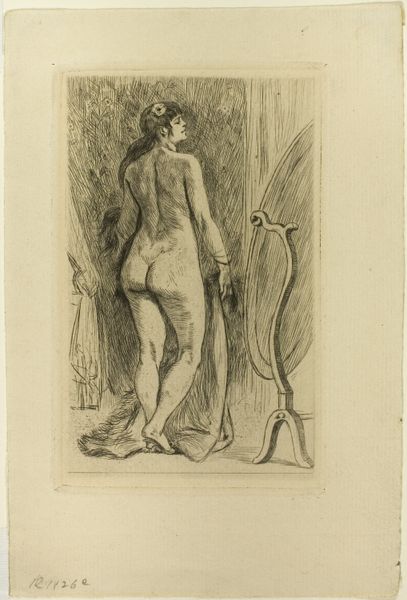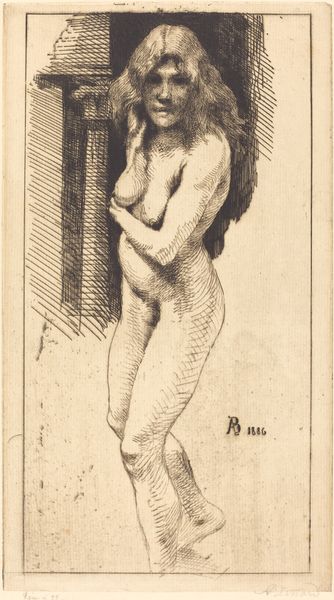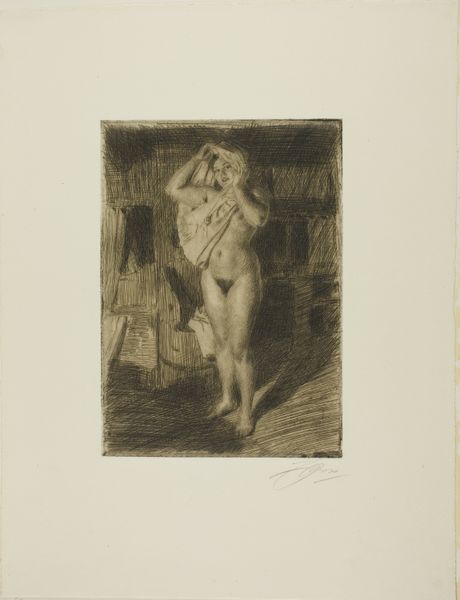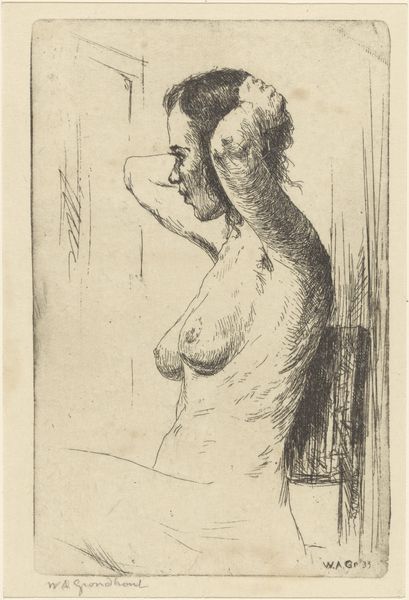
Dimensions: 135 × 96 mm (image); 139 × 101 mm (plate); 427 × 344 mm (sheet)
Copyright: Public Domain
Editor: This is "Venus de la Villette" by Anders Zorn, from 1893. It's an etching printed on paper. There's something so immediate and almost vulnerable about her pose, even though she's the classical Venus. What are your thoughts on this depiction? Curator: It's a fascinating piece because Zorn is playing with the established traditions of depicting the nude female form, and in doing so, is inviting commentary on its representation. Traditionally, Venus is idealized, almost impossibly perfect. But Zorn’s Venus, in its perceived imperfection, presents a compelling question: how does the institutional art world affect what is considered desirable? Editor: So you’re saying her departure from an “ideal” speaks to a broader critique? Curator: Exactly. And look at the setting, too. It's not some classical landscape; it’s domestic, interior. How does this domesticity impact the viewer's understanding of both her image and the male gaze as shaped by institutions such as galleries and art academies? Editor: That's interesting! It's less about a detached appreciation of beauty and more about confronting how that beauty is manufactured and consumed. Were there particular artistic circles influencing Zorn’s approach to these societal power dynamics? Curator: Definitely. Think of the emerging discussions around the objectification of women in art at the time, fuelled by growing feminist consciousness. Zorn, as part of the avant-garde scene, was certainly aware, and perhaps even critiquing it within his artistic sphere. The etching, a print, makes art more affordable and widens audiences for such critical dialogues. Editor: It's amazing how much history is packed into such a small image! I hadn't considered how the *accessibility* of a print can shape a conversation. Curator: Absolutely! By placing this depiction of Venus within this context, we can ask more challenging questions about who art is for, who it represents, and what social messages it conveys. Editor: Well, now I definitely see the image – and the artist – in a completely different, richer way. Curator: Precisely. And I hope it ignites more discussion regarding women in art, and other marginalized artists as well.
Comments
No comments
Be the first to comment and join the conversation on the ultimate creative platform.
